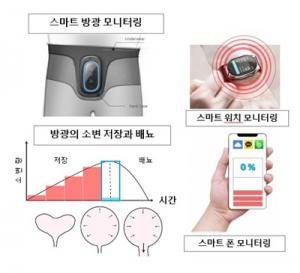Aram Kim, Professor of Konkuk University and Se-hwan Kim, Dankook University joint research team applied for a patent
Neurogenic bladder, urine volume measurement…prevents urinary tract infection and preserves kidney function
A joint research team of Professor Aram Kim (Department of Urology, Konkuk University Hospital) and Professor Se-hwan Kim of Dankook University applied for a patent by developing a patch that measures and informs the amount of urine in the bladder when attached to the lower abdomen (bladder monitoring device and method, patent No. 10-2185227).
This patch uses NIRS (Near Infrared Spectroscopy), an optical diagnostic technology, to analyze optical properties such as light absorption and light scattering when urine is filled in the bladder with a near-infrared band light source (600-1000 nm) that is harmless to the human body and reports the amount of urine.

Professor Aram Kim said, “Neurogenous bladder patients do not feel urinary well, which leads to complications in many cases. This technology will prevent urinary tract infections in neurogenic bladder patients and provide a breakthrough in preserving kidney function.” .
Professor Kim, who currently runs a neurogenic bladder clinic, said, “We are professionally treating the neurogenic bladder that patients with Alzheimer’s, Parkin’s disease, and spinal injuries complain about.” “We developed it by reducing the need for a device that measures and informs.”
In January, Prof. Kim Se-hwan and Dankook University professor visited the Beckman Laser Research Institute at Irvine California State University, a world-class research institute in the field of medical optics, and began research.
Professor Se-Hwan Kim is an expert in the laser field of the Beckman Optical Medical Device Research Center (BLI-Korea) in Korea, and produced a patch using Internet of Biophotonic Things (IoBT) technology.
Copyright holder © The Unauthorized Reproduction and Redistribution of the Medical Hyeopsis is prohibited.
